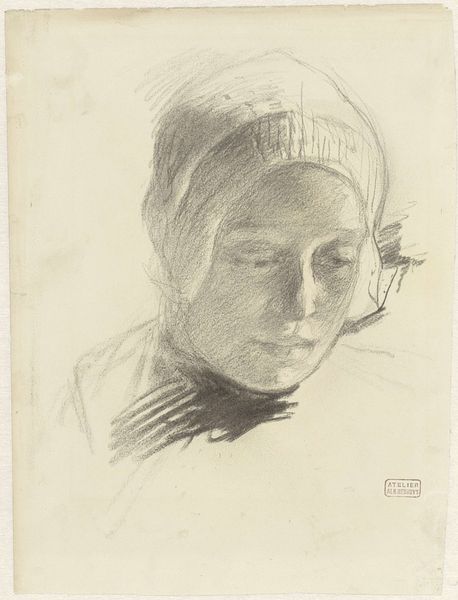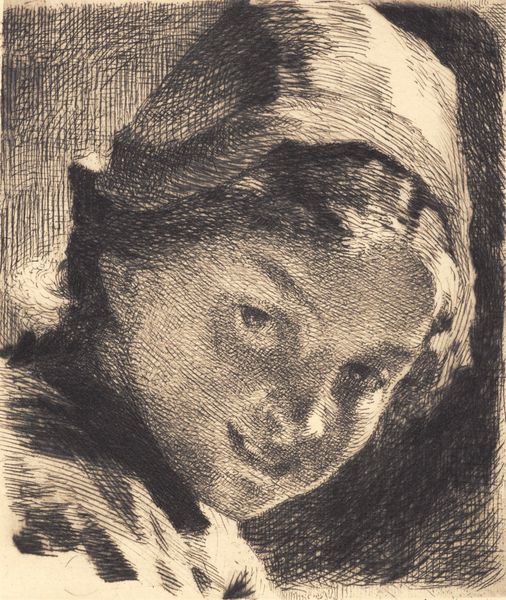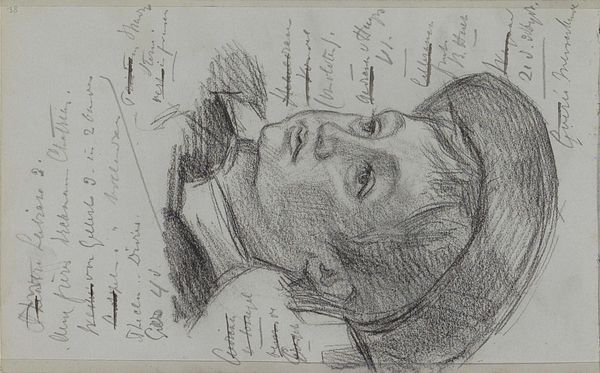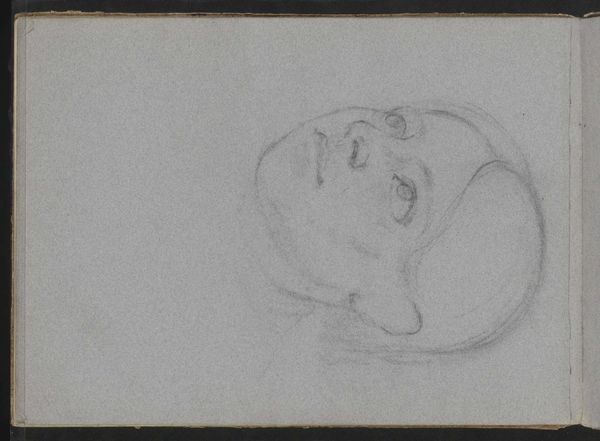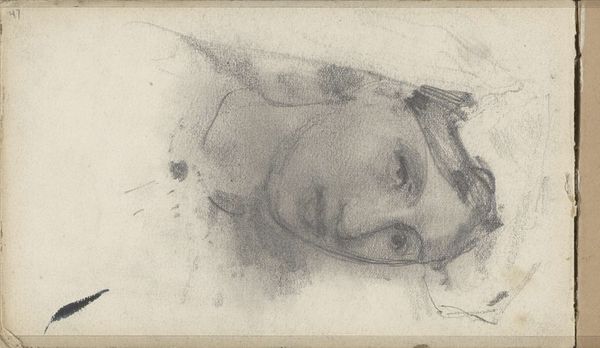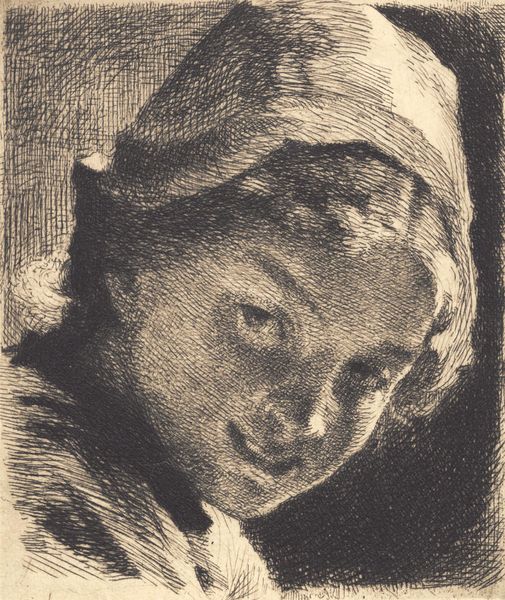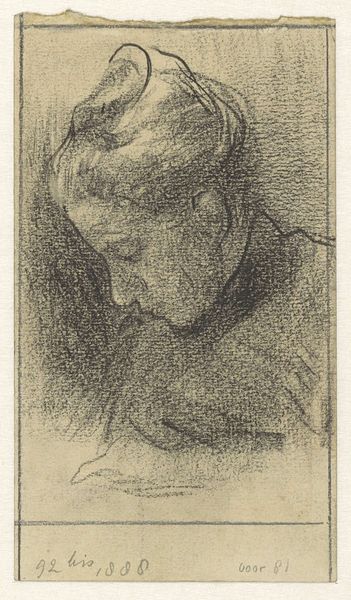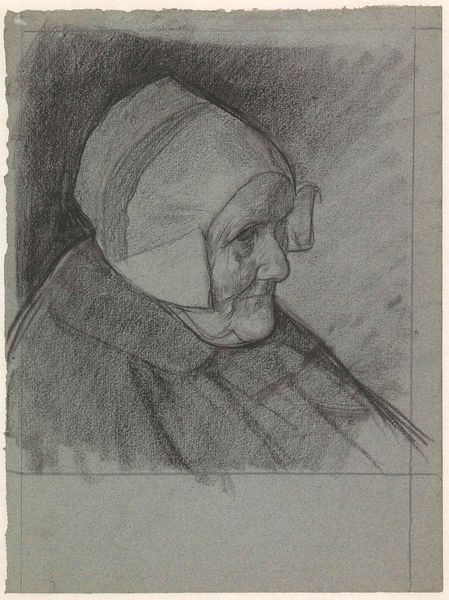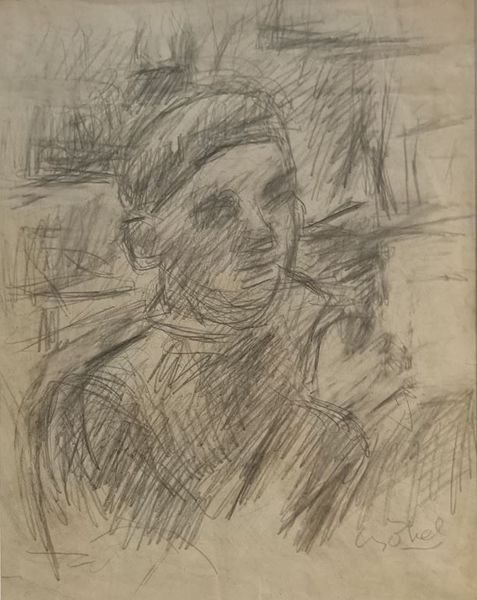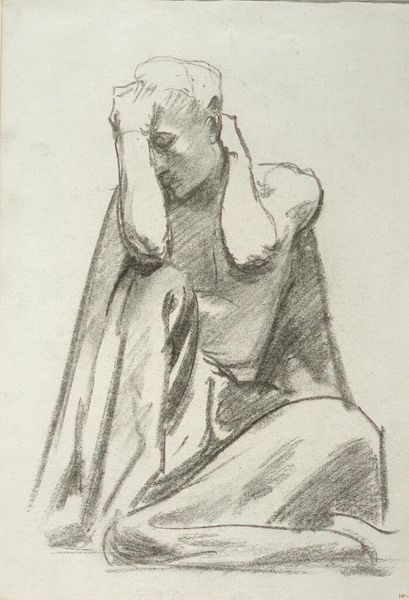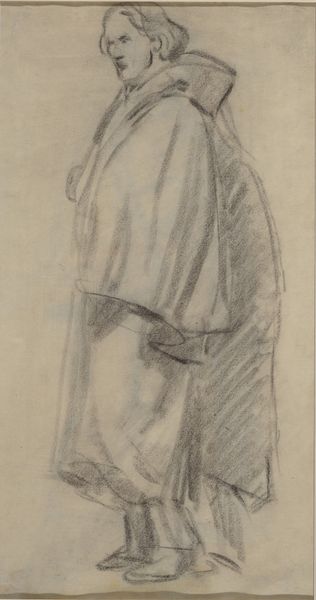
Dimensions: height 208 mm, width 127 mm
Copyright: Rijks Museum: Open Domain
Editor: Here we have George Hendrik Breitner's "Head of a Downcast Woman," created sometime between 1867 and 1923. It’s a pencil drawing, and there’s something very vulnerable in the subject’s lowered gaze. What elements of the composition strike you most forcefully? Curator: The interplay of light and shadow across her face immediately commands attention. Breitner uses subtle gradations of pencil strokes to define the contours of her face, emphasizing the weight of her brow and the delicate curve of her cheek. It’s in these tonal variations that the work finds its power, yes? The hatching is minimal, precise, suggesting rather than explicitly stating. How does this minimal technique guide our eye? Editor: It’s like he’s capturing a fleeting moment, not aiming for perfect realism. There is a very fluid movement with these expressive pencil lines. The absence of rigid lines focuses your attention on the interplay of shapes and values. The neck disappearing gives it such unfinished character. What does that incomplete picture evoke in your mind? Curator: The suggestive nature, where line serves as a trace of perception. We should look at the use of the gray background, actively participating with the pencil marks on the image’s surface to activate a feeling, a subjective response to form. Is this drawing merely an image *of* something, or an event *in* itself? The lack of finish removes her from specific identity; this method lets us experience raw emotion rather than fixed reality. Editor: I see that now— it is a dynamic balance between representation and the intrinsic properties of the medium, highlighting its strengths. Thank you, I had not thought about it that way before! Curator: It is through considered examination of a work’s materials, composition, and its visual vocabulary that we truly come to understand the language it speaks.
Comments
No comments
Be the first to comment and join the conversation on the ultimate creative platform.
